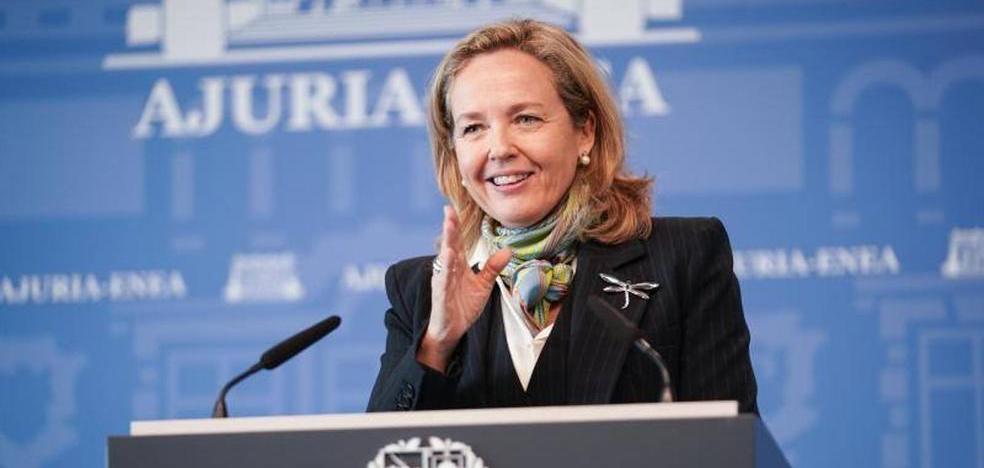When Pharaoh would not let the children of Israel go out of Egypt; God sent ten plagues on the Egyptians. Three out of ten were insects: barnacles, locusts, and carnivores (Exodus 7–12). Scary plagues that destroy all vegetation.
Mr. Belsebub of Flies in Collin de Plancy’s Dictionnaire Infernal.
Holy Bible it is teeming with various insects, and is rarely spoken of in a positive tone: Satan is also called Belsebul, the lord of flies. These devil bugs also serve as allegories, among other things William Goldingin Lord of the flies (1954) in the name of which one who catches the novel immediately knows that he is now in bad waters.
As an organism, an insect is alien to humans in many ways, more different than a bird or a fish. Few still see flies as very sympathetic creatures, but more and more people are already realizing that the world needs insects.
There where Rachel Carson missed 60 years ago In silent spring birds singing, more and more attention is now being paid to the decline of butterflies and bumblebees in fields and gardens. Garden and nature leaves are filled with tips to keep pollinators happy: bars and hotels are built on them, flowers are planted, the lawn is left uncut.
Professor at the Norwegian University of Environmental Science and Biology Anne Sverdrup-Thygeson lists in his book If the insects disappear … (2019, Finnish Katarina Luoma) the miracles of insects: they cultivate the land, keep domestic animals, make paper and cellulose and trap other animals with nets.
Insects also contribute to human food production, take care of the cleanliness of nature and give us the things we need from honey to antibiotics. According to Sverdrup-Thygeson, for example Shakespeare plays, Beethoven symphonies and Galileo Galilein the drawings are scratched onto paper with a purple iron-backed ink derived from tiny stingrays.
Bumble-bee
There is a biologist on the same trail Dave Goulson Brawled in his book (2019, in Finnish. Auli Kilpeläinen), in which he talks about his enthusiasm for nature, which began as a child, and in particular his interest in bumblebees. In 2006, Goulson founded the Bumblebee Conservation Trust, a foundation she protects that she says she has done well.
In Finland, for example Leena Krohn has kept insect sides throughout his career. In Tainaron (1985) the narrator sends “mail from another city” inhabited by giant insects, beautiful and strange and mysterious. Krohn has also written about insects in an appreciative tone in his later works, such as his collection of essays published last spring. What I never learned.
Literature mirrors its time, and little by little, different bugs are playing as important a role on the pages of books as birds.
Ancient since time immemorial, some insects have had a better reputation than others. Ants and bees already reflect diligence and the ability to cooperate Old Testament In the book of Proverbs, and beautiful butterflies represent the joy of spring in Japanese haiku.
Victim Sheep Movie Poster.
The butterfly is probably the most commonly used insect in art as a picture of beauty and lightness, but also death. For example Thomas Harrisin Sacrificial sheepIn the novel (1988) and the film based on it (1991), turning into a butterfly takes on gloomy tones as a serial killer peels off the skin of its victims and stabs them in the throats of moths.
Instead of death, the focus is on beauty and change Selja Ahavan A woman who loved insects (2020). Born in the novel at the time of the witch hunts, Mary has been interested in insects since she was a child, and like a butterfly, she hatches from the cramped role assigned to a woman.
The most famous insect in the literature is also often a picture of various changes.
“When One morning Gregor Samsa woke up from a restless sleep, noticing that he had turned into a huge cancer in bed. ” (Suom. Aarno Peromies.)
Franz Kafkan The beginning of the novel stops: the thought of waking up as a cancer terrifies and disgusts. In transformation (1915) does not further define its species, but in later variations and references to the novel it is most often described as a cockroach.
On the transformation there have been vastly different interpretations of psychology, sociology, feminism, and theology. Gregor Samsa has worked to the point of exhaustion to pay off his parents ’debts, and living as a cancerist is a miserable attempt to connect with family members, in a claustrophobic small room fluttering, and eventually a miserable, lonely death.
The fact that the author has put his protagonist’s insect on the skin brings its power to the story, setting Gregor Samsan from the lowest to the lowest. The transformation is a metaphor for the humiliation in the midst of which Gregor Samsa lives – and at the same time there is a strong presence in the short story that it is his own fault, as in Kafka’s other characters, the inability to act.
“Gregor is a salesman, but what he’s sold is himself: his own agency and dignity, making himself a thorough traitor,” writes Transformation translated into English Susan Bernofsky.
The cockroach has changed from a disgusting pest to a stubborn survivor in the novels of Canadian Rawi Hagen and British Ian McEwan, among others.
Last Over the decades, becoming a cockroach, or befriending a cockroach, has taken on happier shades.
Canadian Rawi Hagen Cockroachin the novel (2010), a Lebanese man who ended up in Montreal is an immigrant on the fringes of society. Sometimes he turns into a cockroach, but that’s not just uncomfortable: as an insect, he’s more invisible, feels freer when Caucasians don’t notice him.
Ian McEwanin Cockroach (2018) reflects Kafka Transformation down to the beginning, but this cockroach is a strongly politically colored, pungent commentary on British politics. In the novel, a cockroach crawls one night under the prime minister’s pillow and takes his character – the prime minister, in turn, moves on to the cockroach’s character, squeaking down the aisles.
The cockroach, who is the prime minister, is much more efficient at work than the human minister, and in the end, he finds that all his colleagues who have risen to power are also cockroaches. In a satirical novel about the origins of the Brexit debate, the cockroach makes politicians ridiculed, showing them to be as incapable of working for humanity as Gregor Samsa in his time – but on the other hand to cope with the situation on his own.
Survival and adaptation of the cockroach also represents Enni Vanhatapion published in January Girlfriend-in the novel, in which the cockroach follows the narrator, a woman exhausted in a perfect relationship, through the story, as a kind of advice-distributing superior.
The protagonist struggling with his mental health compares himself In a girlfriend fly, lizard-like predatory colleague’s nutrition, the situation helpless. The cockroach looks at him from the sink, quietly and without condemnation, as the other, stronger side of the protagonist.
According to the myth, cockroaches are the only creatures that would survive a nuclear war, and while this is not true, the cockroach also represents this overcoming of difficulties in 21st century literature.
Desktop the fly buzzing in the window is annoying, and I don’t miss banana flies in my kitchen, but I know I need both. As the climate crisis worsens, more and more people have learned a new relationship with nature, including insects.
Literature shows what our world contains – regardless of whether the author consciously strives for a social position. When insects in literature are more often friends than pictures of death, it can be thought of as telling something broader.
It’s exciting to see if this fly is already a nice guy in the books.
#Saturday #Essay #Insects #considered #disgusting #pests #disappearance #destroys






